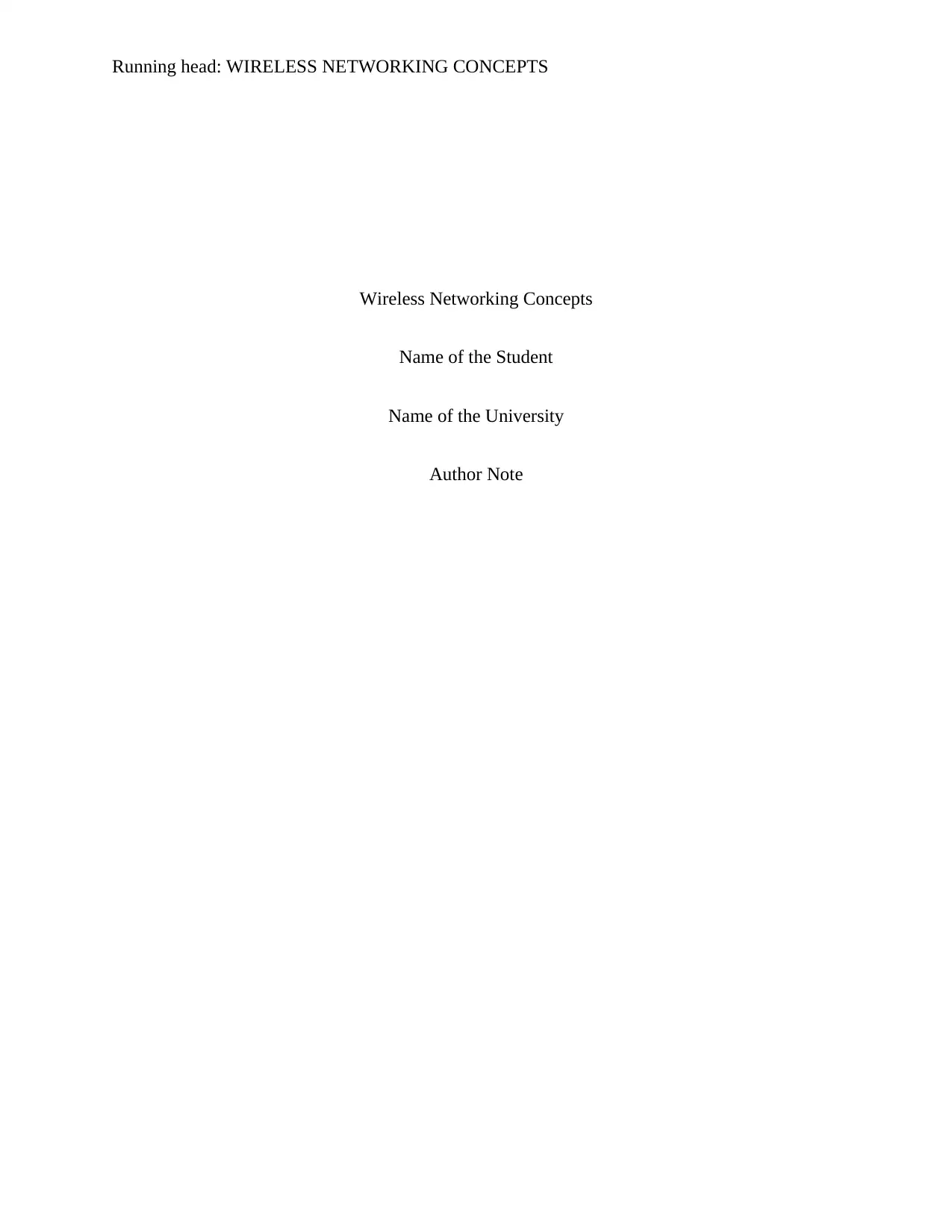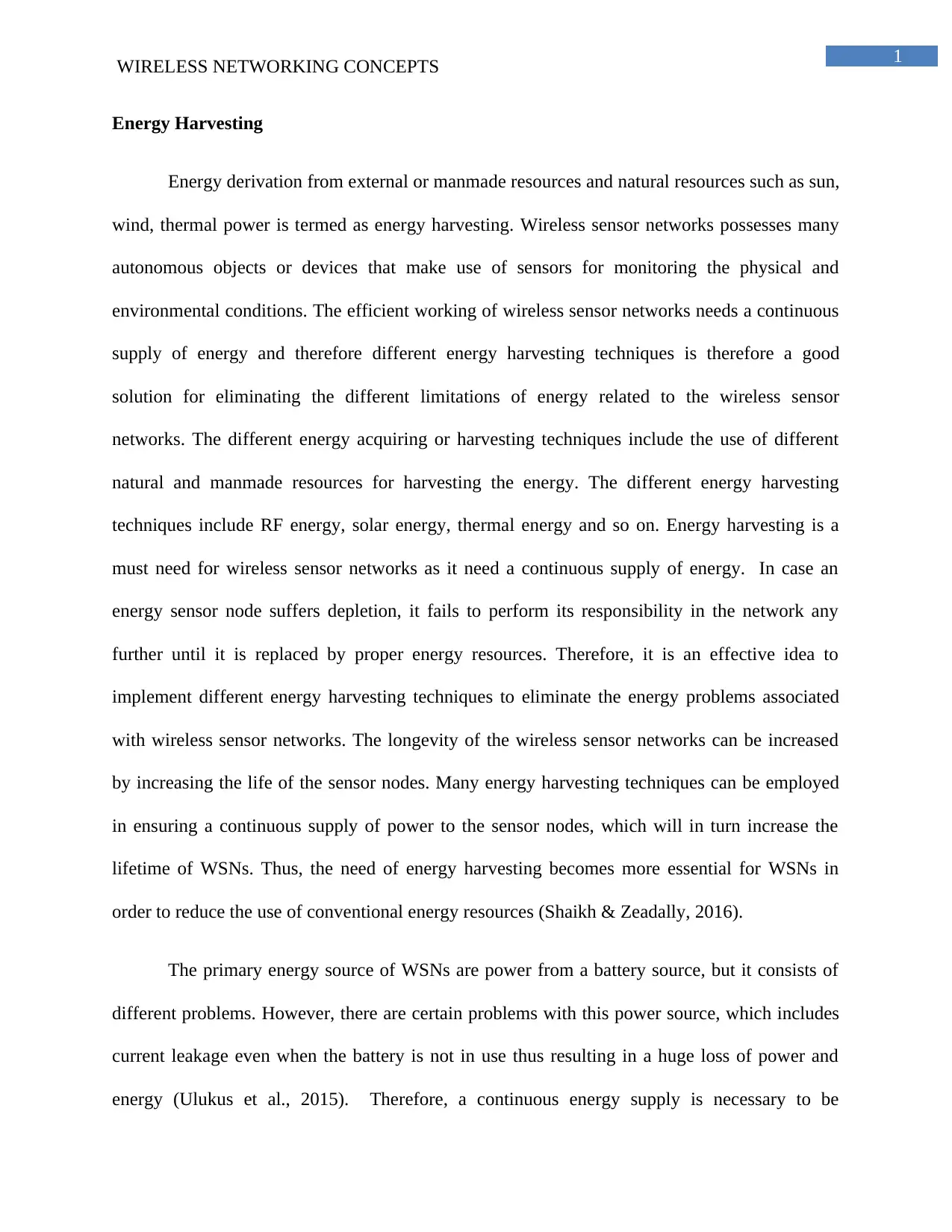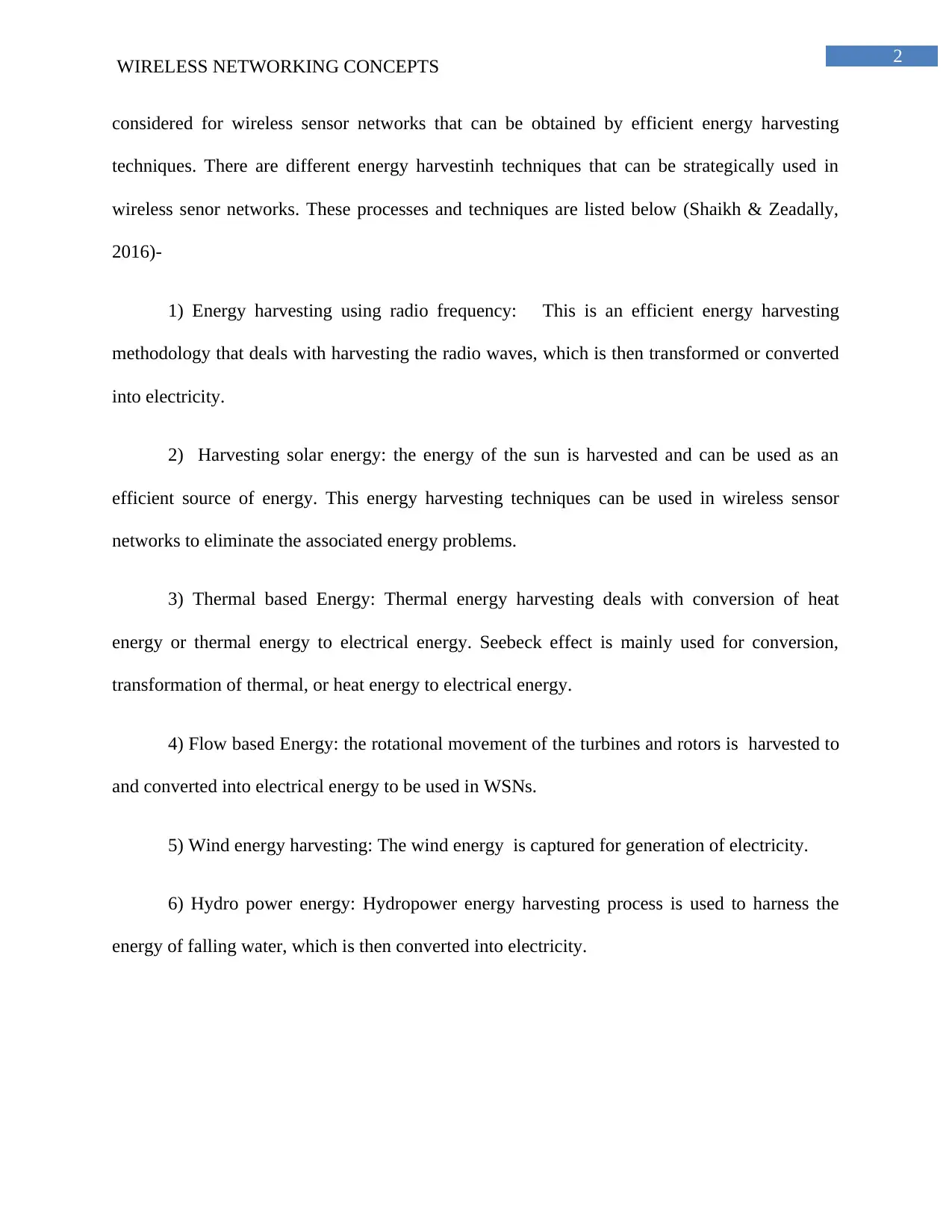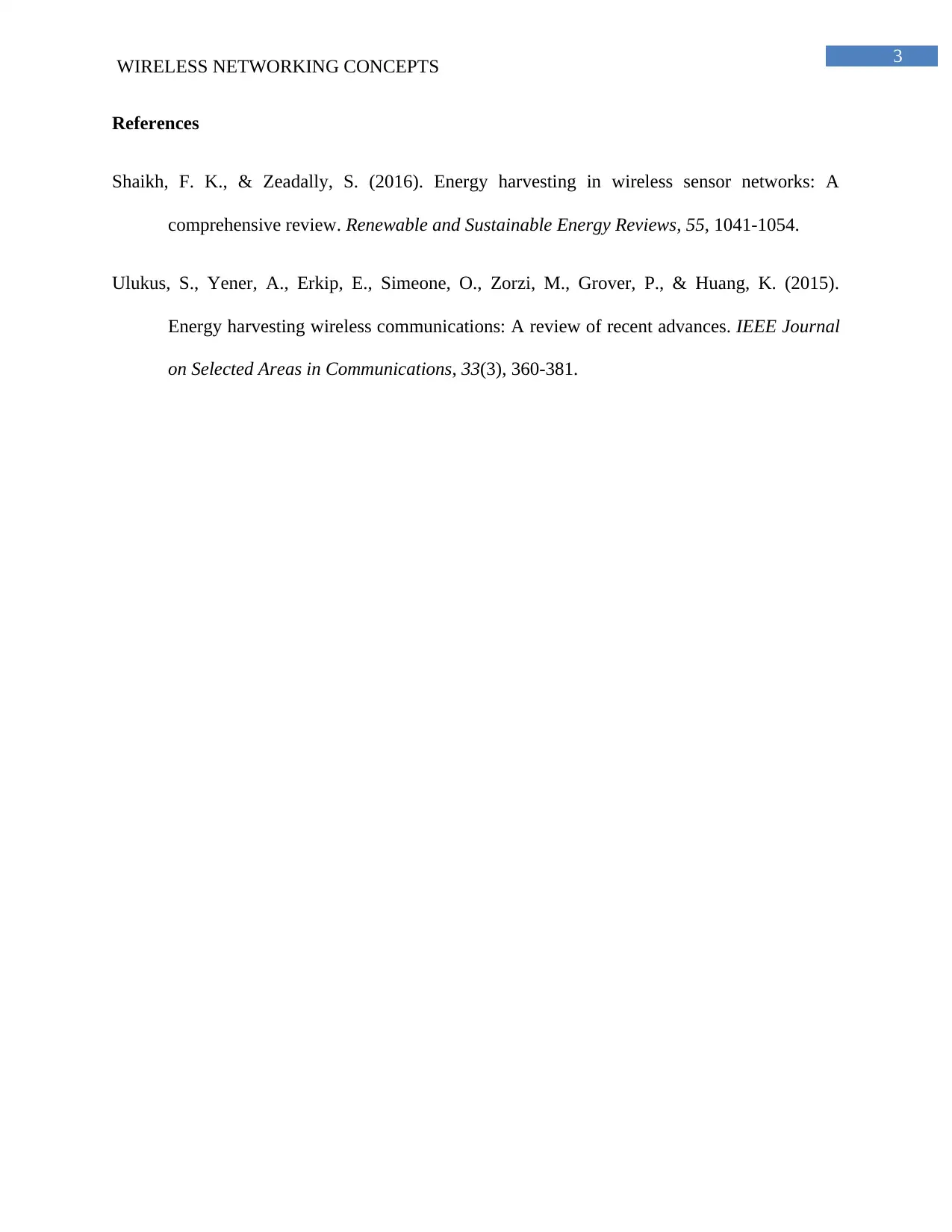Wireless Networking Concepts: Energy Harvesting for Wireless Networks
VerifiedAdded on 2020/03/23
|4
|694
|185
Homework Assignment
AI Summary
This assignment explores the critical concept of energy harvesting within wireless networking, particularly focusing on Wireless Sensor Networks (WSNs). It begins by defining energy harvesting as the process of deriving energy from external or natural resources to power autonomous devices. The paper highlights the importance of energy harvesting in overcoming the limitations of traditional battery-powered WSNs, which often face issues like power depletion. The assignment then delves into various energy harvesting techniques, including radio frequency (RF) energy harvesting, solar energy harvesting, and thermal energy harvesting using the Seebeck effect. Other methods like flow-based, wind, and hydropower energy harvesting are also mentioned. The core argument emphasizes the need for continuous energy supply in WSNs to ensure their longevity and operational effectiveness, making energy harvesting a vital solution for reducing the reliance on conventional energy sources.
1 out of 4











![[object Object]](/_next/static/media/star-bottom.7253800d.svg)